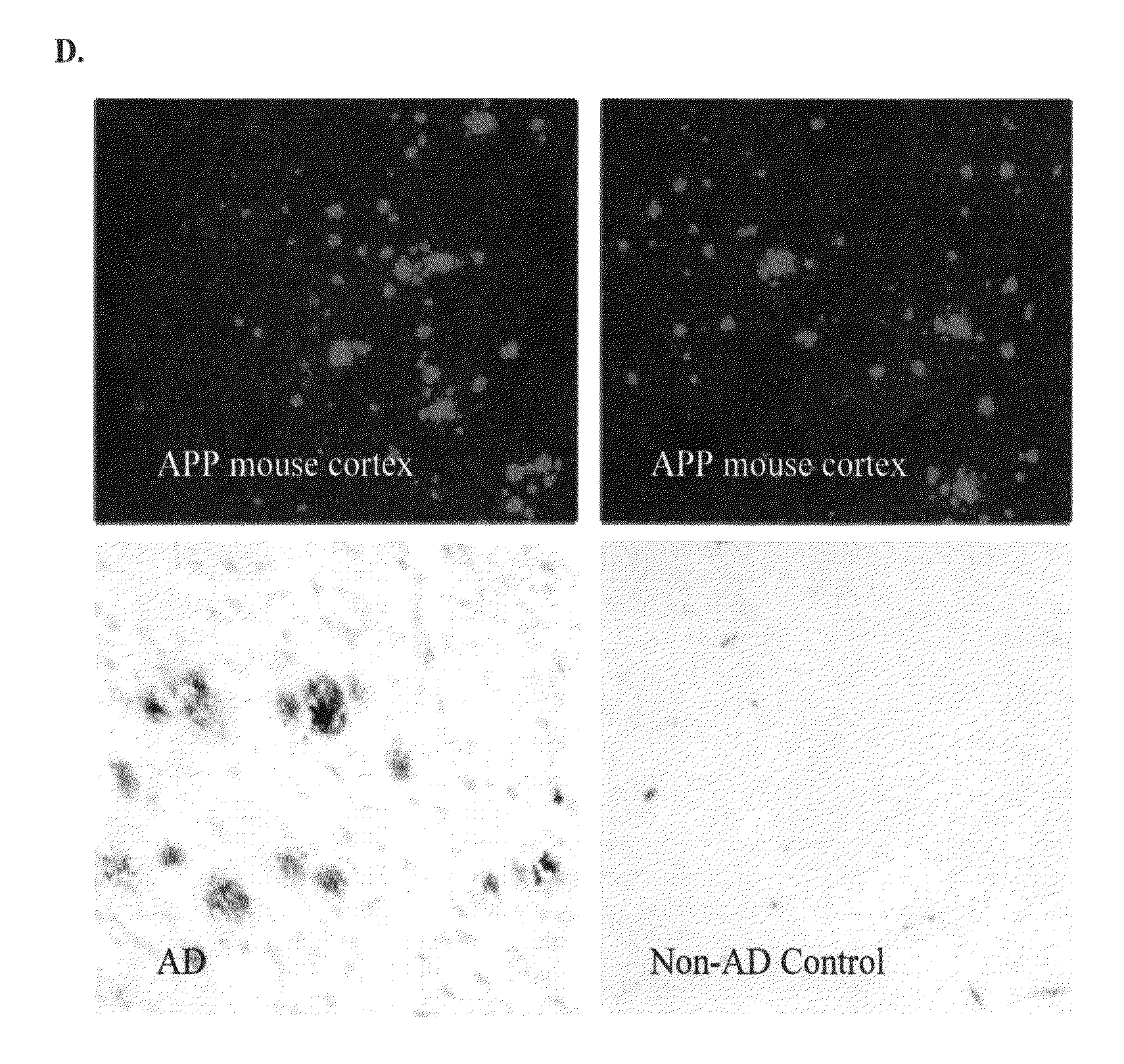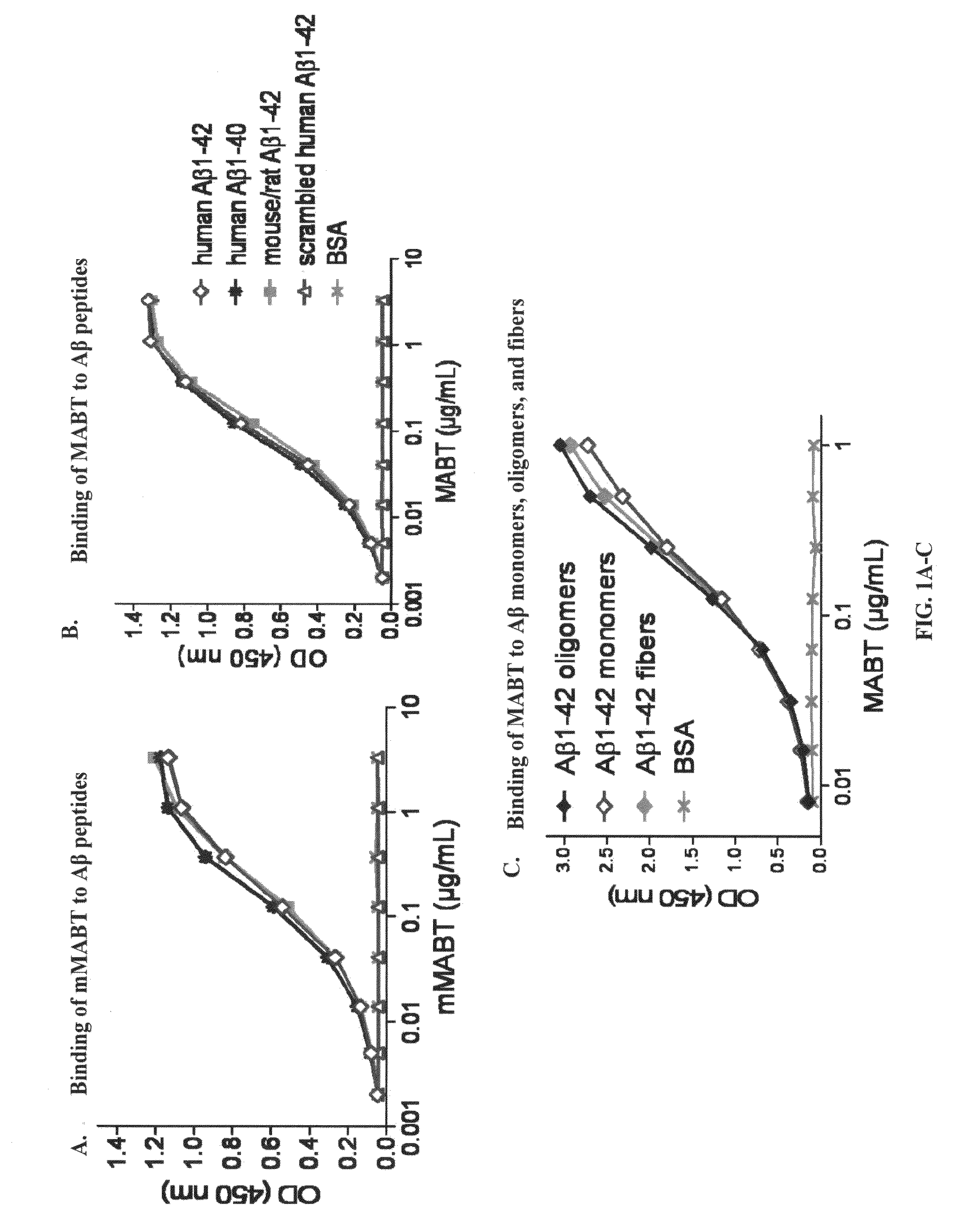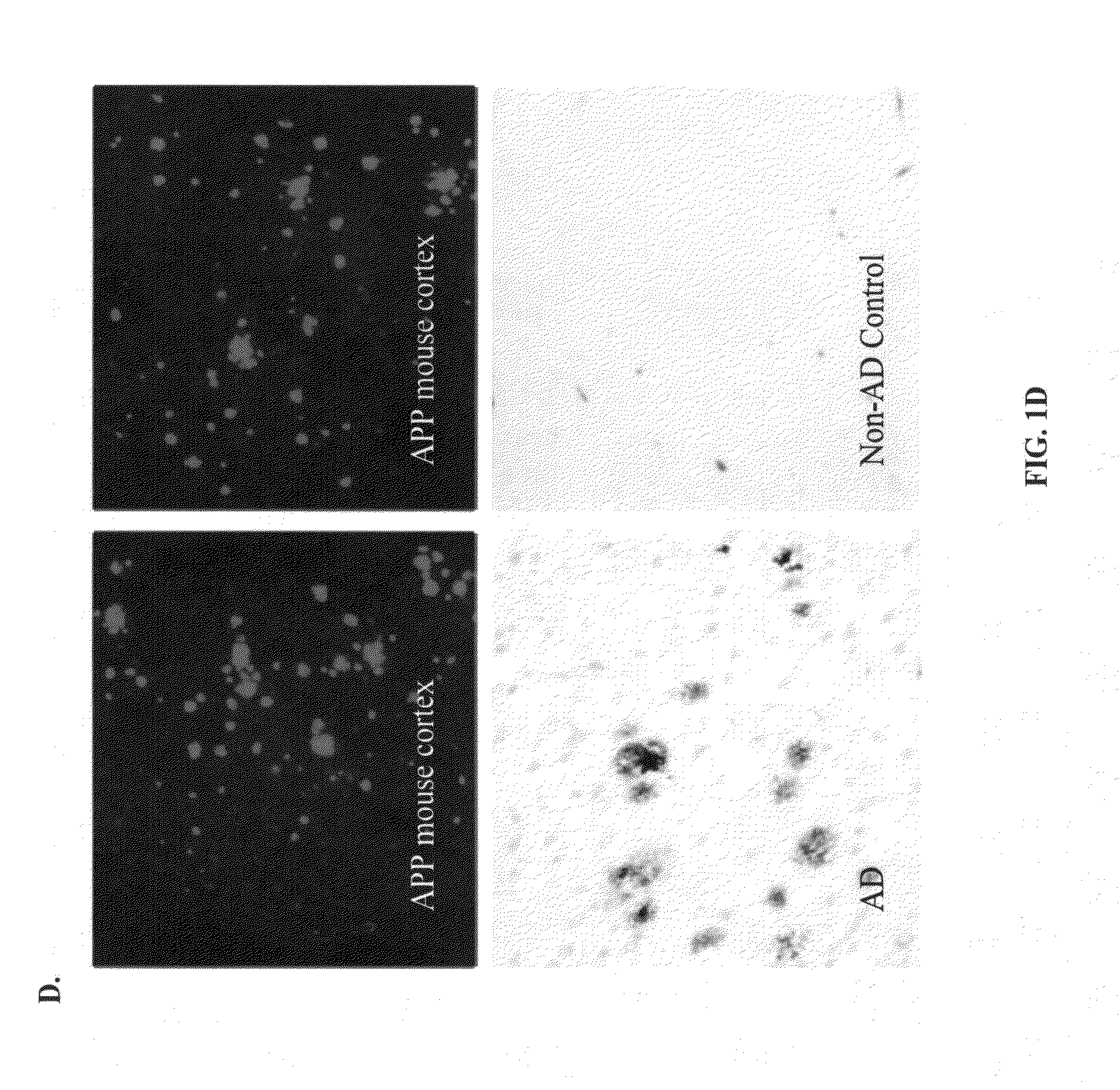Safe and functional humanized antibodies
a humanized antibody, safe technology, applied in the direction of antibody medical ingredients, instruments, metabolic disorders, etc., can solve the problems of inappropriate pro-inflammatory response, vasogenic edema, start to interfere with the normal function of the organ or body system, etc., to reduce the effect of effector function, effective neutralizing capability, and reducing the effect of a toxicity
- Summary
- Abstract
- Description
- Claims
- Application Information
AI Technical Summary
Benefits of technology
Problems solved by technology
Method used
Image
Examples
Embodiment Construction
[0094]Described below are cell-based assay systems for testing anti-amyloid beta antibodies and methods for monitoring and adjusting treatment of a patient with anti-amyloid beta antibodies. Also described below are cell-based assay systems for testing the safety or efficacy of a neuroprotective agent and methods for monitoring and adjusting treatment of a patient with a neuroprotective agent. Further described below are safe and functional antibodies and methods for using such safe and functional antibodies for the treatment of Alzheimer's disease. Pharmaceutial preparations and modes of administration are also described.
[0095]Provided herein are in vitro cell-based assay systems to test the safety and functionality of antibodies, or other agents, for the treatment of an amyloidosis. In certain embodiments, the cells that are affected by the amyloidosis (”target cells“), the amyloid protein in its pathological form, and immune effector cells (e.g., natur...
PUM
| Property | Measurement | Unit |
|---|---|---|
| pH | aaaaa | aaaaa |
| areas | aaaaa | aaaaa |
| time | aaaaa | aaaaa |
Abstract
Description
Claims
Application Information
 Login to View More
Login to View More - R&D
- Intellectual Property
- Life Sciences
- Materials
- Tech Scout
- Unparalleled Data Quality
- Higher Quality Content
- 60% Fewer Hallucinations
Browse by: Latest US Patents, China's latest patents, Technical Efficacy Thesaurus, Application Domain, Technology Topic, Popular Technical Reports.
© 2025 PatSnap. All rights reserved.Legal|Privacy policy|Modern Slavery Act Transparency Statement|Sitemap|About US| Contact US: help@patsnap.com



